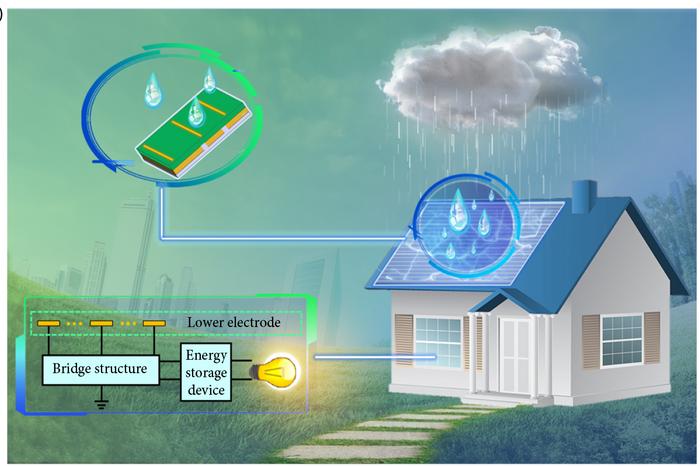Researchers may have devised a revolutionary new way to replace solar panels altogether. Instead, we could one day see rooftops adorned with rain panels that can capture energy from falling raindrops.
The idea of capturing energy from falling raindrops isn’t exactly new. In fact, scientists have discussed the idea for several years now. However, there are some technical limitations to bringing rain panels to life, chief among them the fact that each droplet of rain is only going to create a tiny amount of energy for the panels to capture.
So far, researchers have utilized triboelectric nanogenerators (TENG), which collect energy from the raindrop when it collides with the panel. However, the amount of energy collected is small and thus makes the concept a bit inefficient and impractical. So why don’t we just set them up like solar panels, you might ask, with multiple cells in each panel?

That’s a good question. While joining multiple cells together works great for solar panels – whether they are solar panels that need sunlight or solar panels that don’t need sunlight to generate energy – it just doesn’t work for TENG panels like those needed to gather electricity from rain. That’s because of a phenomenon called “coupling capacitance,” which occurs between the lower and upper electrodes in each cell.
Because of this phenomenon, the amount of power lost from cell to cell is actually too great, making it impossible to build an effective rain panel that gathers energy reliably from falling rain. Thankfully, engineers and researchers may have found a way around this issue.
Using D-TENGs, a new type of TENG that significantly reduces (but doesn’t completely negate) the coupling capacitance issue seen in regular TENGs, we may be able to finally make rain panels capable of gathering renewable energy from falling raindrops. It’s still a bit early to tell if the process will be as reliable as solar energy, especially given the ongoing changes in the weather we’re seeing because of climate change.
But, if researchers are able to expand on this idea and truly make it work, we could see more renewable energy options popping up. A study on their findings is available in the journal iEnergy, where the researchers break down the new D-TENGs and what they might make possible.








